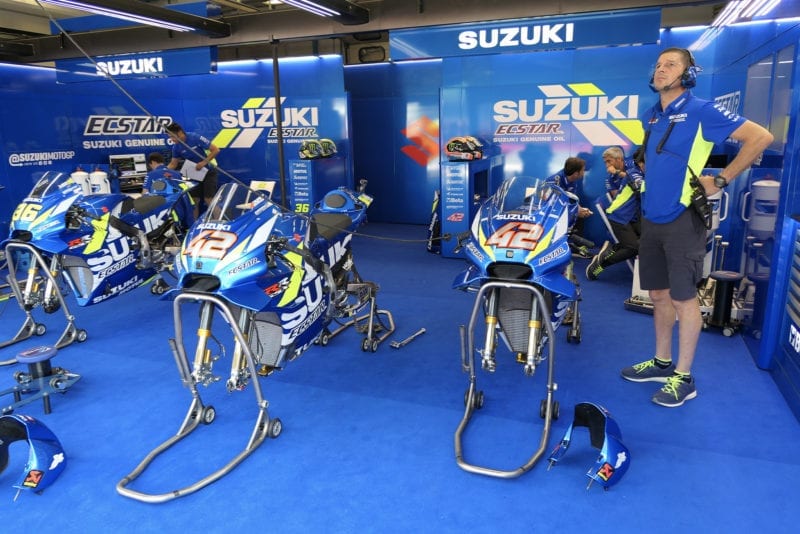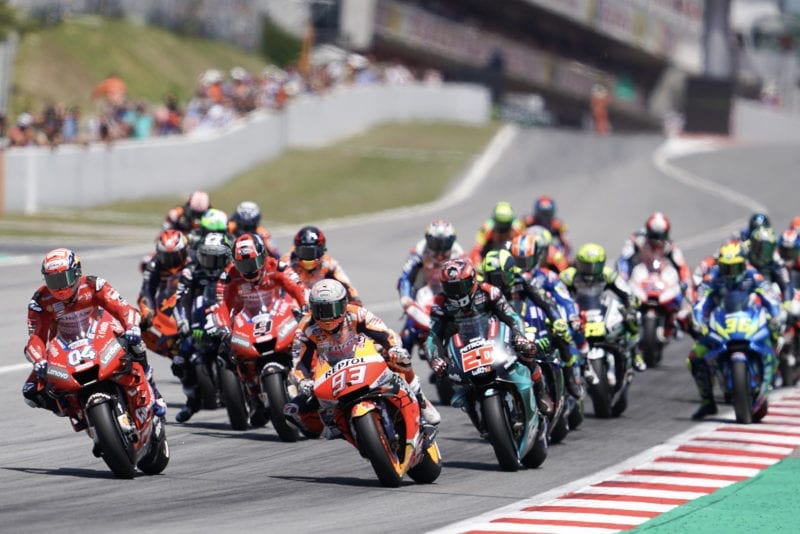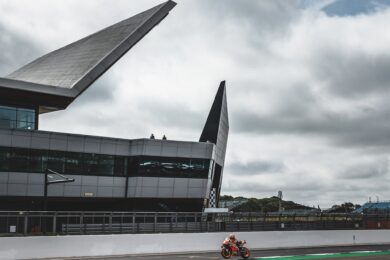There will be some upsides. Instead of getting from one race to another by plane, some paddock people will travel by camper van or motorhome, no doubt moving around in convoys, just as riders did decades ago. The paddock’s sense of community will be reinforced by the travails of the virus, as has been the case in other walks of life.
Logistics will also be complicated by the density of the calendar and by freight supply lines affected by the pandemic. That’s why the factories are already working hard to stockpile spare parts, especially crash parts and bodywork, because there will be little time to manufacture and transport once the racing begins.
There is no doubt that the gruelling Covid-19 calendar will make the 2020 season a feat of endurance like no other.
It’s no surprise that some paddock people are apprehensive about what lies ahead, but you’d struggle to find anyone who would prefer a summer without racing.
Everyone wants to go racing and most of the teams need to go racing, because Dorna can’t afford to subsidise them forever. Teams derive their income from performing in front of TV cameras – if they can’t do that they’ll most likely go bust.

Will Suzuki, Yamaha and Honda engineers be allowed into Europe?
Oxley
“This season will very be hard, but we don’t know how hard, because nobody has ever tried it,” one factory engineer told me. “But this will be the biggest problem compared to other problems.”
What are the other problems that riders and teams face? Those based in countries outside Europe still aren’t sure they will be able to enter Spain in time to quarantine for two weeks before Jerez, because many travel restrictions are still in place.
The biggest concern is for those travelling from Japan, because staff from Honda, Suzuki, Yamaha and other Japanese companies make up a significant and vital part of the paddock and pit lane.
However much you love MotoGP you would struggle to convince anyone that it’s a critical industry or business.
Currently the Japanese government strongly recommends people don’t travel to Europe and elsewhere, which makes it difficult for big companies to request staff to get on a plane. However, many Japanese MotoGP staff are already trying to convince their management to let them go to Europe.
There is a chance that the Japanese government will drop its Covid-19 advice from Level 3 to Level 2 at the start of July, just in time for Jerez, where testing starts on July 15.
Those travelling from Australia – Jack Miller, several of Valentino Rossi’s crew and others – face more serious obstacles. At the moment the Australian government fully prohibits anyone from leaving the country for work unless “it’s essential for the conduct of critical industries and business”.
And however much you love MotoGP you would struggle to convince anyone that it’s a critical industry or business.
Similar barriers face people travelling from other countries outside Europe.
And what happens if these people can’t get to Jerez in time? Will the racing go ahead without them? Or will the affected factories demand that the season is delayed once again?
Assuming that those with non-European passports can travel to Europe they will still face problems with their work visas, due to the revised calendar which requires them to stay in Europe for longer than usual. The Schengen Agreement restricts people from Japan and other countries outside Europe to a maximum stay of 90 days in the Schengen area.
Of course, although the European sector of the 2020 calendar is out, the pandemic most certainly isn’t. Last week Beijing reported its first cases of Covid-19 in almost two months, causing the authorities to reimpose lockdown in some areas.
MotoGP will remain on tenterhooks at most events until the starting lights go out on Sunday afternoon, because the racing will be entirely dependent on the local health situation at every venue.
There is light at the end of the tunnel, but it’s not as bright as we’d like it to be.
Revised 2020 MotoGP calendar
Date |
Race |
Circuit |
| 19 July | Spanish GP | Jerez |
| 26 July | Andalucían GP | Jerez |
| 9 August | Czech Republic GP | Brno |
| 16 August | Austrian GP | Red Bull Ring |
| 23 August | Styrian GP | Red Bull Ring |
| 13 September | San Marino GP | Misano |
| 20 September | Emilia Romagna GP | Misano |
| 27 September | Catalunya GP | Barcelona |
| 11 October | French GP | Le Mans |
| 18 October | Aragón GP | Aragón |
| 25 October | Teruel GP | Aragón |
| 8 November | European GP | Valencia |
| 15 November | Comunitat Valenciana GP | Valencia |
| TBC | American GP | Circuit of the Americas |
| TBC | Argentinian GP | Rio Hondo |
| TBC | Thai GP | Chang |
| TBC | Malaysian GP | Sepang |



